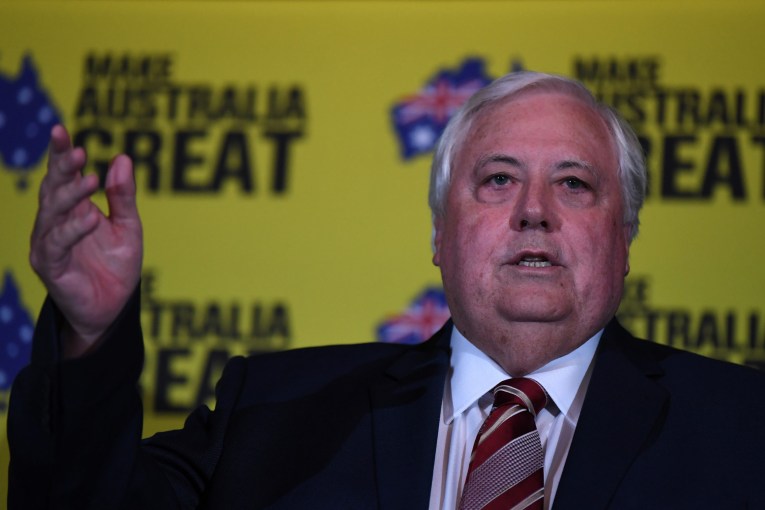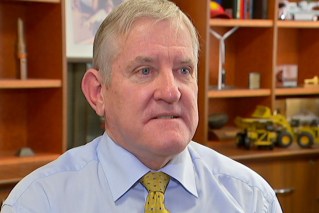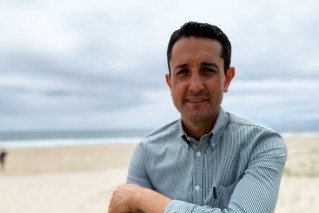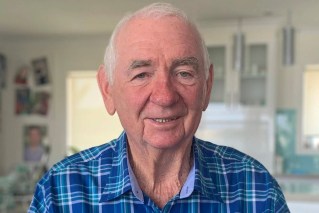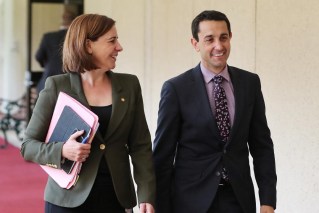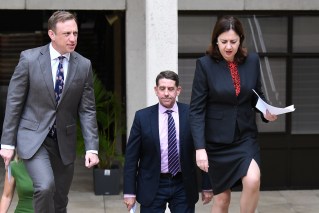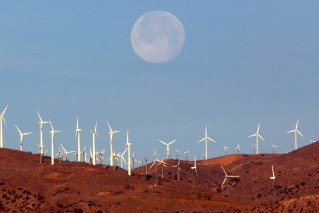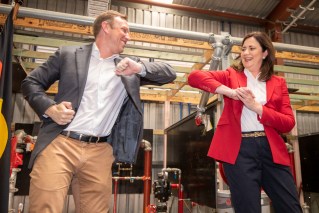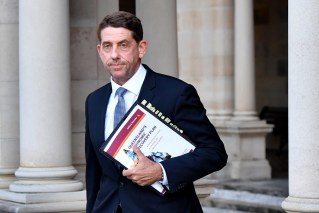Reading between the lines of Palaszczuk’s ambitious Cabinet reshuffle
The Palaszczuk government has one eye on Queensland’s economic recovery and another on the 2024 election, writes Sean Parnell.
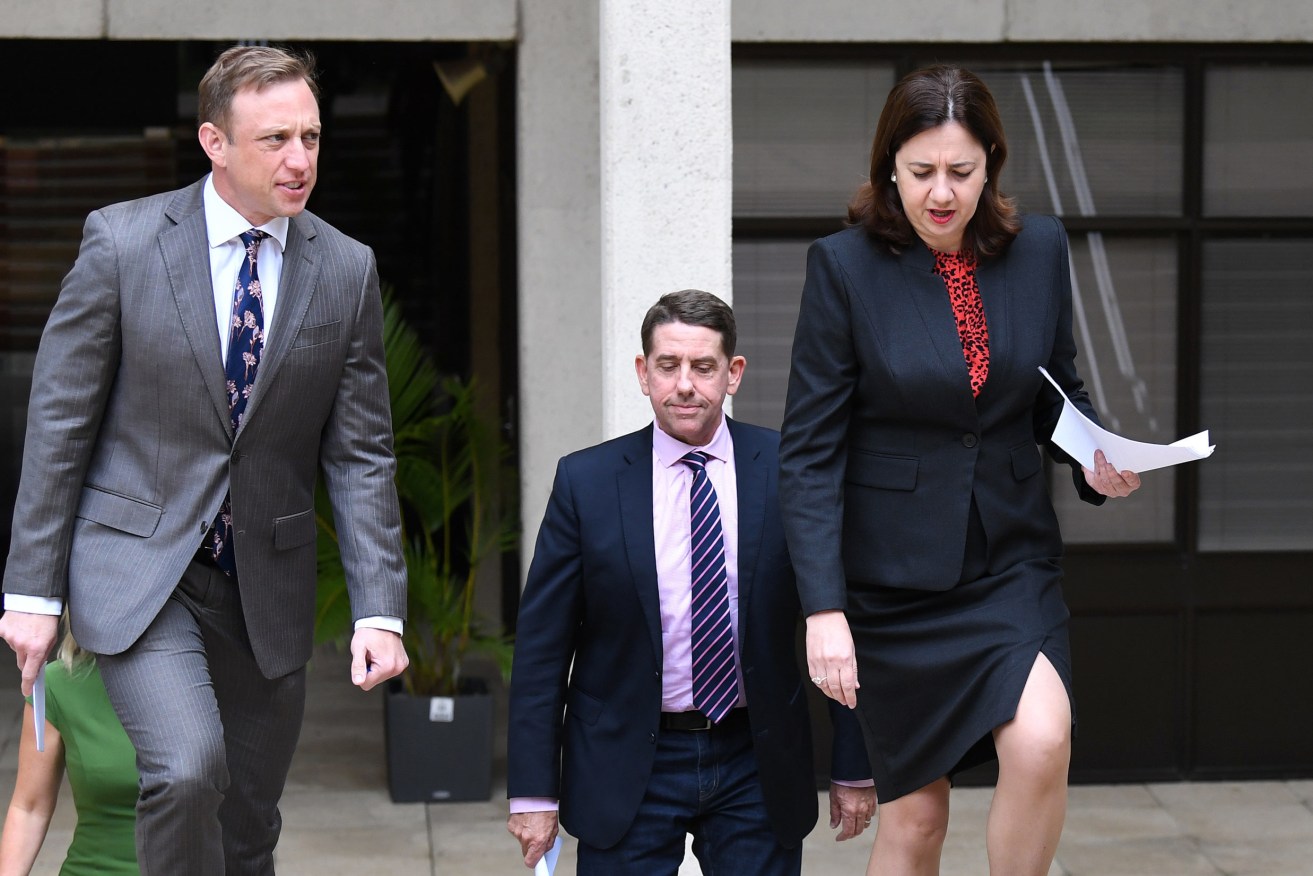
Queensland Premier Annastacia Palaszczuk, with key Cabinet ministers Steven Miles (left) and Cameron Dick after the last Cabinet reshuffle. (Photo: AAP Image/Dan Peled)
Sometimes you try to be all things to all people and satisfy none. Labor was hopelessly conflicted on Adani in the 2017 election, torn between blue collar supporters in the regions and green-tinged voters in the south-east. It was somewhat of a hollow victory.
But at the last election, Adani wasn’t much of an issue and nor was climate change. In the middle of a pandemic recession, Labor planted itself as a party focussed primarily on jobs, and particularly new industries such as renewables and hydrogen. This gave Annastacia Palaszczuk broad support across the state, even if the Greens continued their rise in the inner-city. It was the kind of balancing act that federal Labor has yet to manage successfully.
Palaszczuk’s third-term Cabinet may be little more than names and portfolios on a piece of paper at the moment but by the end of Labor’s four-year term it could be much more. There are signs of landmark change – green shoots, if you will – and a government banking on new industries, major projects and private investment.
It has the makings of a Smart State-style strategy, and Palaszczuk has the biggest mandate since Peter Beattie to push something like this through for Labor. The question, of course, is whether the Premier has the right people in the right positions at the right time (and if the Labor Caucus keeps thinking that of the leader).
There’s a lot to do in Queensland’s first four-year term – and a few ministers will have their hands full.
Palaszczuk kept responsibility for trade but the role is somewhat diminished, with no trade missions likely any time soon and the investment aspect handed off to Cameron Dick. Dick, the Treasurer, needs to find a new fiscal strategy and offset debt with private investment.
This will see the Treasurer, representing the Right faction, become somewhat of a deal-maker (remember when Dick put up public funds to keep Virgin Australia based in Queensland?). It remains to be seen how this will work.
Deputy Premier Steven Miles has moved from health to state development, infrastructure, local government and planning. The former environment minister and Left faction leader will be all about building things, and creating jobs, for the good of Queensland.
Miles proved himself across the tricky detail of health, and leapt into the political fray during the election, but will have to draw on all his strengths to kick off some major projects this term and deal with any scrutiny.
One project that needs a strong set of hands is Cross River Rail. This was previously the responsibility of Kate Jones in state development, amid concerns that unions and contractors might go to war. But now, it has gone to Transport and Main Roads Minister Mark Bailey. This will be an area to watch (Bailey also has new trains to deliver).
Perhaps the biggest change is Palaszczuk splitting off the resources portfolio – previously linked with natural resources and mines, or mines and energy – and giving it to a junior minister in Scott Stewart. But Stewart has the advantage of being Townsville-based, and can focus on traditional industries alone.
Mick De Brenni gets a promotion, to a new ministry of energy, renewables and hydrogen (as well as public works and procurement). He will need to be a reformer, but will have the support of Dick and Miles, and can leave coal to Stewart and water to regions-focussed minister Glenn Butcher. There is important nuance here, administratively and politically.
Yvette D’Ath takes over the health portfolio vacated by Miles, and it won’t be as high profile this term – unless there is a second wave of COVID-19. Her old roles as attorney-general and justice minister have been given to one of Labor’s rising stars, Shannon Fentiman. In a reflection of the unfinished business for Labor (without even mentioning the euthanasia laws for which she will also have responsibility) Fentiman will also be minister for women and minister for the prevention of domestic and family violence. Again, this will be an area to watch.
Meaghan Scanlon, who alongside Stewart and Leanne Linard is new to Cabinet, will have responsibility for the environment, the Great Barrier Reef, science and, somewhat poignantly, youth affairs. The role now appears more marketing than administration, but for Labor that will be crucial in addressing the concerns of green-tinged voters and preventing the next generation switching to the Greens.
The budget on December 1 will give an indication of how quickly the Palaszczuk government can pivot to put these new ideas into action. The resumption of parliament, and budget estimates, will test the new ministers, although their opposition counterparts will be new to the roles too.
Palaszczuk has taken some risks here, and her Cabinet will need to deliver results for her strategy to be successful. If they are, and it is, Queensland will not only enjoy an economic recovery but a more sustainable trajectory. Of course, without results, it could all come crashing down – bringing with it Palaszczuk, and any leaders-in-waiting.
